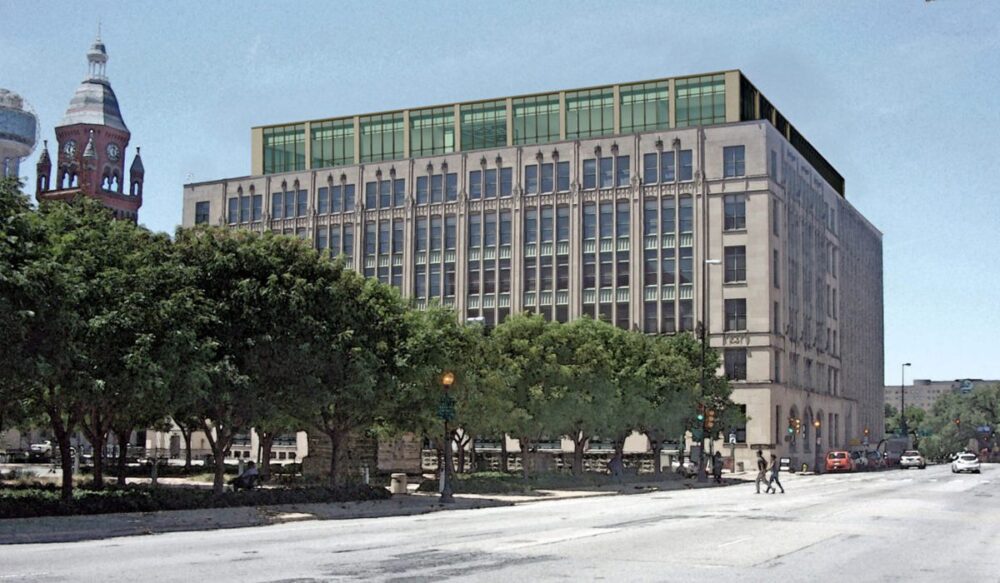In 2016, the Dallas County Commissioners Court launched a $194 million project to demolish and renovate the Dallas County records building.
The old records complex was built in stages between 1913 and 1955 and was a three-building establishment. The building had clearly begun to decay, and the electrical system was outdated. Rats and asbestos filled the spaces inside the building, as well as rust and lead paint.
Today, the building is complete, and the three structures have been assimilated into one. “This building with these updates, it could have another 100 years of life,” said Jeff Blackwell, who is a project manager with Broaddus and Associates, the company that worked on the renovation. “Instead of trying to fix it, we’re trying to leave the remnants of the old skeleton.”
The Commissioners Court created a $194 million budget for the renovation and said that they aimed to preserve the structures that are historically relevant. Dallas County hired architecture firm Gensler to work on designing the project.
“The first step, really, is understanding kind of what you’ve got,” said Paul Manno, who is Gensler’s design principal for the project. “It’s a little bit like archaeology in the way that you really have to dig into the history of the building.”
As the demolition and reconstruction continued, the contractors uncovered several historical relics. On the fourth floor, after removing old carpeting, they found a terrazzo floor with a giant Texas star. A construction worker also scraped away paint to uncover original marble from the 20th century on the ground level. Behind another wall was a large safe that had been bricked over for decades.
In another closet, Manno said that they also found a stack of old doors stamped with “whites only” that had been taken down and tossed to the side amid desegregation.
“There’s no other workspace like this anywhere in Dallas,” said Manno. “It’s not often to find a building that has that much history concealed with it. To walk through there and to see and almost smell that history.”

